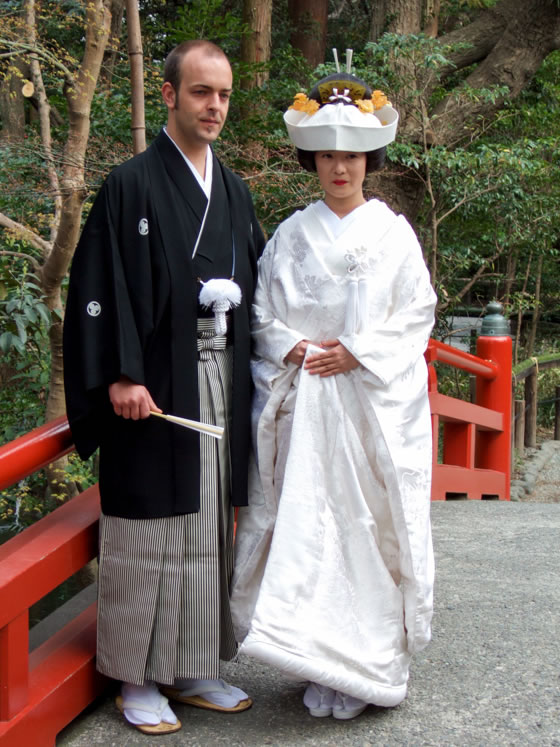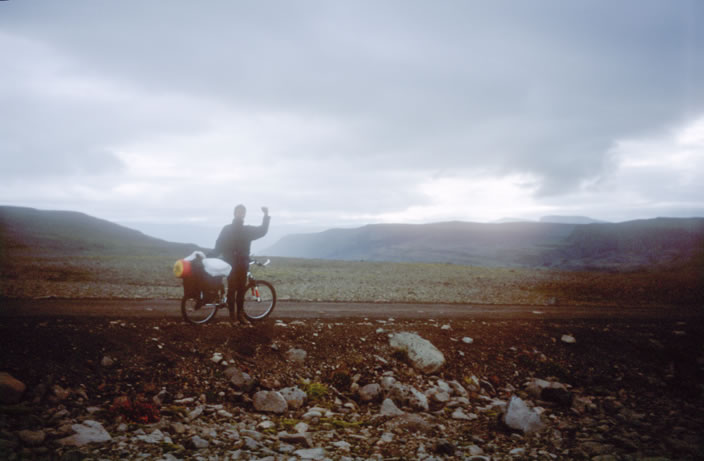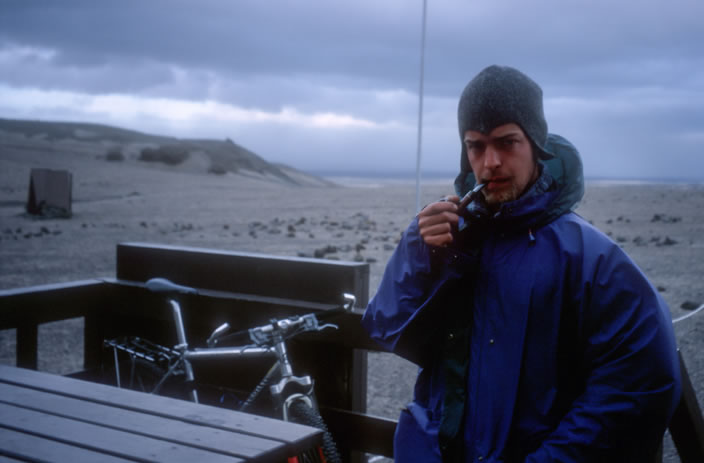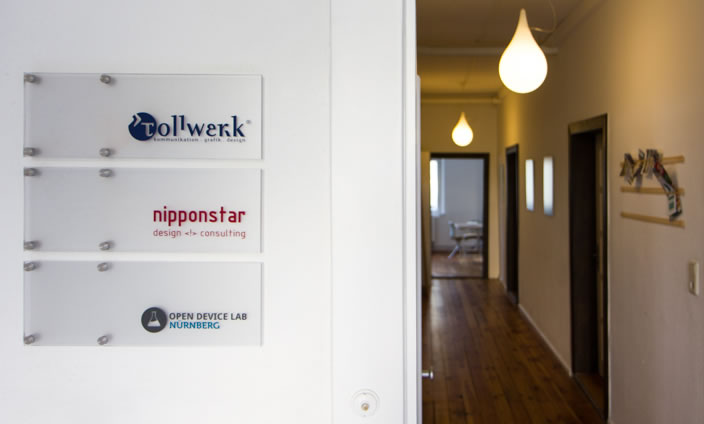https://jkphl.is/@jkphljkphlJoschi_Kuphaljoschi.kuphalJoschiKuphaljoschi@kuphal.netArticles RSS feed
About myself
and the things that make up my reality
If I had to pick three things that I consider most important for my all day life, then I’d probably pick my daughter, my computer and huge amounts of coffee. That’s me in a nutshell, I guess. Too short? Here comes the full story.
My name is Joschi Kuphal. I’m living in Nuremberg, Germany, where I’m running the web design and ad agency Tollwerk. Besides being the head of our small team (and thus automatically in charge of some of those tasks nobody really likes to deal with) I mostly worked as a designer, front and back end developer over the last 14 years.
I am happily married to a Japanese designer, interpreter and translator and supposedly the proudest father of the most adorable girl ever. Despite having never really moved away from Nuremberg, I am constantly living at the border to Japan — which gained even more significance through the bilingual education of our daughter.
For a long time, I considered my preferences and obsessions to be quite distinct. Creating structure has definitely been a major focus over the years, but this is subject to change at the moment. So many things happened in 2013 that I need to refine and redefine my own role — and I’m quite excited about how things are developing.
The road I came along
I was born in 1974 in the medieval city of Nuremberg, but I grew up a few kilometres outside, together with my parents and my younger brother. As far as I remember (and my parents told me), I’ve always been a sort of maverick, constantly doing, tinkering and constructing things. Even today I have no idea of what boredom is. My brother and I spent a lot of time with our grandparents, who travelled a lot with us, but also gave us ample opportunity to do some handicrafts like woodworking, sewing, electronics or model making. We enjoyed this a lot and I’m still very grateful for that period, as I learnt so much.
At the age of 10, when I moved onto secondary school, computers entered my life: I started attending a computer science elective and began programming in Basic, Pascal and later on some Assembler. I remember well when we got four brand new Commodore 128 “home computers” and all of us 20 pupils wanted to work exclusively on them — at the same time, of course. My interest in playing computer games was very short lived, so when I got my first own computer in 1987 — an Amiga 500 — I rather participated in the Federal Youth Competition and programmed some crazy piece of software visualizing the trees a ranger could see in his forest ... don’t ask me! ツ

My wife and I had a very traditional Japanese wedding ceremony at the shrine Tsurugaoka Hachiman-gū in Kamakura, Japan
At around the same age, my brother and I were getting into Karate, and over the time we even had some success in local and Bavarian championships. This was, at the same time, my first contact with the Japanese culture, and I started collecting everything affiliated. When I was 12, I bought a Japanese dictionary and decided to emigrate as soon as possible. Besides all that, I was highly interested in graphology (the study and analysis of people’s handwriting), hypnosis, shamanism and psychology in general. Quite strange hobbies for a 12 year old, huh?
The month before my 15th birthday, I did my very first holiday job in a local factory. In Germany you aren’t allowed to work before the age of 15, but the factory did some tricks and delayed my payment until after my birthday. This was going to become my first real PC: An Escom 386SX. Man, that was an awful lot lof money — 6.500 German Marks, can you imagine that? — and I was soooooo incredibly proud!
Taking a turnoff
As a teenager, I had always wanted to become a psychologist. For some reason it never came to my mind that I could also do something with computers. It took me several years to convince my family that being a psychologist is a real job. Then suddenly, on Easter Sunday 1993, I completely changed my mind within a couple of minutes. I was just about finishing school at that time, shortly before I would have to apply for university. Me and my family had lunch in a Greek restaurant, and I did neither like the meal — it was mutton — nor the restaurant itself. My father didn't know what he triggered when he replied to my complaint about the restaurant’s decoration:
If you’d like to do something about this, you should probably become an interior designer!
Wilko Kuphal, Easter Sunday 1993
Back home I found out that there was an Interior Design degree programme at the local Academy of Fine Arts. My path totally changed direction that day.
To meet the admission requirements I had to complete a nine-month internship at an accredited company or institution, so after I finished school I attended a one-year course at the Werkbund Werkstatt Nürnberg. Besides having art and design lessons there, we mostly worked with our hands and various materials like wood, glass, metal and textiles. The school’s concept was laid out to teach some key skills that became more and more neglected by regular schools. I remember well some “girls” at my course that had literally not the slightest idea of how heavy a metal block was, how far you can go until a glass pane breaks or that beating it with hammer is not the most effective way of treating a piece of wood. They had just never acquired any intuition for materiality. Now imagine, that was 20 years ago!
The year at the Werkbund Werkstatt was one of the best in my life and has shaped me a lot. During that time I also moved from my parents house to my first own flat in Nuremberg. Unfortunately, I didn’t pass the admission exam for the Arts Academy at the first attempt — at that time, only four students were accepted for the interior design course each year. So I had to kill another year and started an internship at an interior design office. I soon advanced to being a freelancer and worked for them until the end of my studies in early 2000. When I showed up there for the first time, there was exactly one computer — a pretty weak 286er PC — which was infrequently used by exactly one person. When I left, we had a proper network, about 15 workstations, two servers and a CAD department of which I was the head. There was nobody around being experienced with computers, so I was on my own most of the time. In late 1997 — after having played around a little for myself — I launched a pretty decent DHTML website for them, which unfortunately isn’t properly archived. In fact, this was my first official web development job.
Getting things straight
I finally started my interior design studies at the Academy of Fine Arts Nuremberg in 1995, parallel to the work at the design office. My professor happened to be an industrial designer, so we covered a very wide range from graphic over product and interior design up to architecture. Lectures were generally common for the students of all semesters, as we were fewer than 20 people in total. The age average among us students was 28 — with me being an absolute exception — and most of the others had learnt one or two professions before (or at least worked for a couple of years), which was a great benefit for all of us. The relationship between the students was very tight and I consider it very special that I'm still, after 14 years, in close contact with more than half of them.

Me reaching the 2.000 kilometre mark at a mountain pass in the north west fjords of Iceland (Vestfirðir)
A very important step in my life wasn't directly related to my studies, but took place during that period: For the first (and so far only) time, I went on a extensive journey which I began to prepare almost two years in advance. I was determined to circle Iceland by bike — without being particularly athletic or a frequent biker at all. I really can’t remember how I came up with this idea. It was not only the physical challenge that I was interested in, but also the fact that I would have to be alone for quite some time (and everyone who ever travelled in Iceland will know how alone you can be there). I started learning Icelandic and gathering the right equipment long before I went there in 1997. I spent two and a half months on my bike and covered a distance of approximately 2.500 kilometres. It was one of the most influential experiences of my life, and from a certain perspective I did not attain my full age until that first time in Iceland. Later on I visited Iceland regularly and I’m very happy to still have friends over there today.

Awaiting a sand storm at the volcano Askja
My studies themselves were challenging in that it was mostly up to us what we were working on. So it happened that I drifted into that 3D virtual reality rendering thing during the main study period. As a semester project, for example, I participated in an ArchiCAD competition, designing and visualizing the Inn of Bree from The Lord of the Rings with two dozen of high-quality QuickTime VR panoramas (which required four computers and six weeks of non-stop rendering at that time). My diploma thesis was a draft and interactive visualization of a three-dimensional operating system, implemented with Macromedia Director 8, for which I had to write a 3D engine in Lingo as it had no native 3D support at that time. Admittedly, neither my fellow students nor the teaching staff had any idea of what I was doing. But this perfectly reflected the nature of our studies:
Be open for everything, become good in what you are obsessed with and become a good (read: constructive) critic for everything else.
The most important lesson, however, was to learn how to run a complete project on your own, starting with the finding of a challenging task and ending with a presentation in front of a demanding audience.
Ah, and there’s one tiny little detail I didn’t mention yet: My present wife was among my fellow students there as well, but that’s a different story. ツ
Running my own business

In 2013 we founded the Open Device Lab Nürnberg which is also located at our agency premises
Right after I finished my studies, there were some friends asking me for little jobs like Could you make me a poster for my pharmacy?
or We’d need someone doing some funky Flash stuff!?
. My girlfriend at that time was just graduating as a graphic designer. I asked her if she would like to join me, and she answered: “Yes, but when we do it, we do it properly!” So we rented a small room and founded our little joint adventure “Tollwerk”. Our partnership didn’t last long, neither did our private relationship, so I found myself being solely responsible after no more than eight months. I never planned to run a big company with many employees — and still don’t do so now. However, over the years, I had some apprentices who all stayed with me, so after ten years we had accidentally grown to a team of five people. Right now there are six of us and I personally believe that, as a team, we have never been better.
My passions and obsessions
With my zodiac sign being Virgo, I've always had a strong passion for structure. I started fiddling with XML et al. in the late nineties, long before I got to do with a relational database. Out of the lack of available solutions I wrote an XPath parser and an XSL-FO processor in PHP, authored tons of XML Schemata just to validate the hell out of everything and developed a couple of domain specific XML dialects. I became a microformat early adopter and am secretly in love with all kinds of meta data.
In 2003 we got in touch with TYPO3 for the first time and soon became specialists for this awesome CMS. Over the years, I developed several dozen of TYPO3 extensions — some of them published in the official TYPO3 Extension Repository — and finally became a TYPO3 Certified Integrator in 2012. I do, however, take a very critical view of the way TYPO3 develops in the last couple of years.
The dark side of my obsessions probably is that I’m tending towards what I call “toolistic” (I’m not sure if this is an appropriate translation). That is, instead of solving a task right away, I often tend to decide to better create a tool that generally enables people to solve tasks like the one in question faster, easier or with a better result. Got the problem with that? Right. I’m probably spending way too much time with being “uber-thorough” and sometimes less effective as I could be.
Looking back I see myself as a kind of “digital prematurity”. I have been a little too early for being a true digital native, but compared to the majority of my peers I was always far ahead regarding this whole computer thing. I am, however, very aware that the generation of my daughter will be even be much more native than we all can imagine today, and I must admit that I’m a little bit concerned about this.